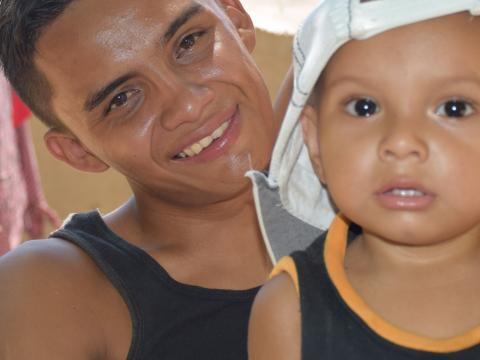How community volunteers and smartphones revealed dangerous gaps in Zika knowledge.

By Alfonso Rosales, Senior Advisor for Maternal, Newborn & Child Health
In May 2015, the first cases of Zika virus infection were confirmed in Brazil. In less than nine months more than 1.3 million people were infected, and the virus had spread through 41 countries and territories across Latin America and the Caribbean. This heralded an epidemic that is anticipated to last for at least another three years.
In July and again in October of that year, associations between Zika virus infection and Guillian-Barré syndrome and microcephaly were reported in Brazil. By February 2016, as evidence was mounting of a causal link between Zika virus and microcephaly plus other neurological anomalies, the World Health Organisation (WHO) declared the Zika epidemic a Public Health Emergency of International Concern.
Three days after the WHO declaration, World Vision’s Latin America and the Caribbean Regional Office declared a global emergency response category III, and launched a regional response in five countries: Brazil, Colombia, El Salvador, Honduras and Guatemala. These were selected on the incidence of suspected Zika virus cases plus the capacity of the public health sector in each country.
Distributing and gathering
World Vision’s response comprised of vector control, prevention and protection, and community engagement. Within six months the organisation had reached more than three million people across more than one-thousand communities in the worst affected municipalities with information on vector control and individual protection behaviors, distribution of protection kits for pregnant women, and community engagement activities to advocate and participate in sanitation campaigns.
To support institutional operations, ministries of health and the global community at large, World Vision’s response included the collection and dissemination of epidemiological data to increase efficiency in the prevention and control of the outbreak. Using a two-stage, 30–cluster sampling method we collected information from a total sample of more than 3000 participants in six countries (the five mentioned above plus the Dominican Republic). A mobile-technology version of WHO’s Knowledge-Attitudes-Practices for Zika questionnaire was administered at an overall cost of $0.17 cents per data-point; a total of $7.50 per questionnaire.
The survey was carried out by community volunteers who underwent a two-day training on interview techniques and utilisation of mobile technology: KoBoCollect 1.4.8 (1057). The questionnaire was administered in Spanish in face-to-face interviews. Each interviewer used a smartphone to collect and store the interview data. When the team had access to the Internet the completed questionnaires were sent to the SMAP management platform. All collected data were downloaded from the SMAP server into Microsoft Excel. Data were checked for inaccuracies and inconsistencies and then entered into IBM SPSS Statistics 23 software.
Plugging the holes with data
Results from this study informed national ministries as well as WHO of the limitations that national and regional risk communication campaigns were having in each of the affected countries. For instance, study results highlighted that populations affected were only identifying transmission routes—mostly limited to mosquito bites and contaminated water—and that there was negligible knowledge among participants regarding documented vertical and sexual transmission plus the highly probable blood transfusion route.
This type of information allowed national governments and the global community to modify risk communications approaches to improve epidemic-related behavioral change interventions to address and improve risk-communication. This in turn meant vulnerable individuals and communities, most importantly women and children, were better protected from infection.